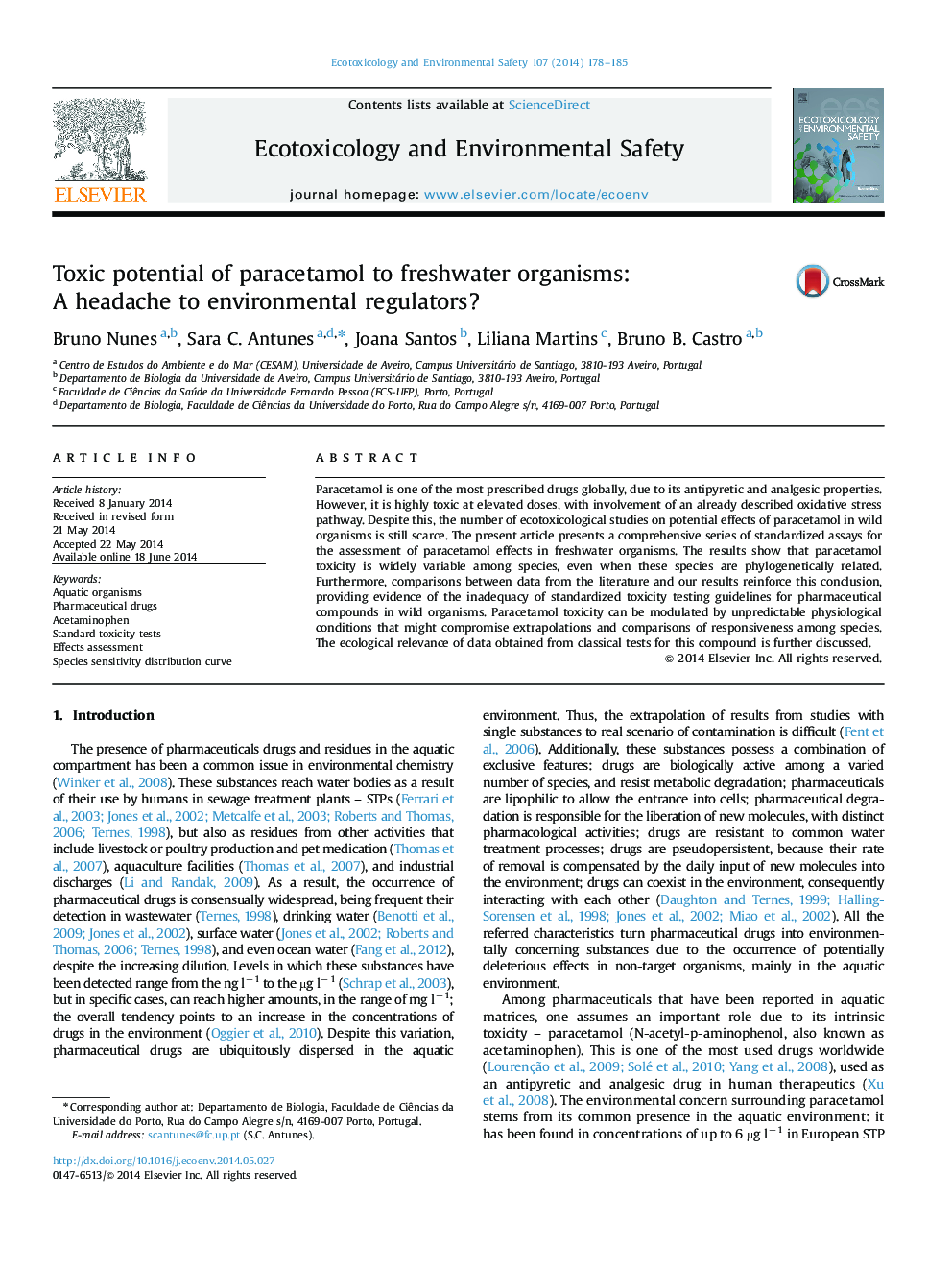| Article ID | Journal | Published Year | Pages | File Type |
|---|---|---|---|---|
| 4419946 | Ecotoxicology and Environmental Safety | 2014 | 8 Pages |
•Paracetamol is one of the most prescribed drugs and a priority pharmaceutical.•Paracetamol toxicity was widely variable among distinct organisms, even closely related.•Oxidative stress is the main mechanism of toxicity, and crustaceans are the most sensitive ecoreceptors.•There is need for exploring the mechanistic nature of paracetamol׳s toxicity.•The variable spectra of benchmark toxicity values should be a headache to environmental scientists and regulators.
Paracetamol is one of the most prescribed drugs globally, due to its antipyretic and analgesic properties. However, it is highly toxic at elevated doses, with involvement of an already described oxidative stress pathway. Despite this, the number of ecotoxicological studies on potential effects of paracetamol in wild organisms is still scarce. The present article presents a comprehensive series of standardized assays for the assessment of paracetamol effects in freshwater organisms. The results show that paracetamol toxicity is widely variable among species, even when these species are phylogenetically related. Furthermore, comparisons between data from the literature and our results reinforce this conclusion, providing evidence of the inadequacy of standardized toxicity testing guidelines for pharmaceutical compounds in wild organisms. Paracetamol toxicity can be modulated by unpredictable physiological conditions that might compromise extrapolations and comparisons of responsiveness among species. The ecological relevance of data obtained from classical tests for this compound is further discussed.
Graphical abstractFigure optionsDownload full-size imageDownload as PowerPoint slide
